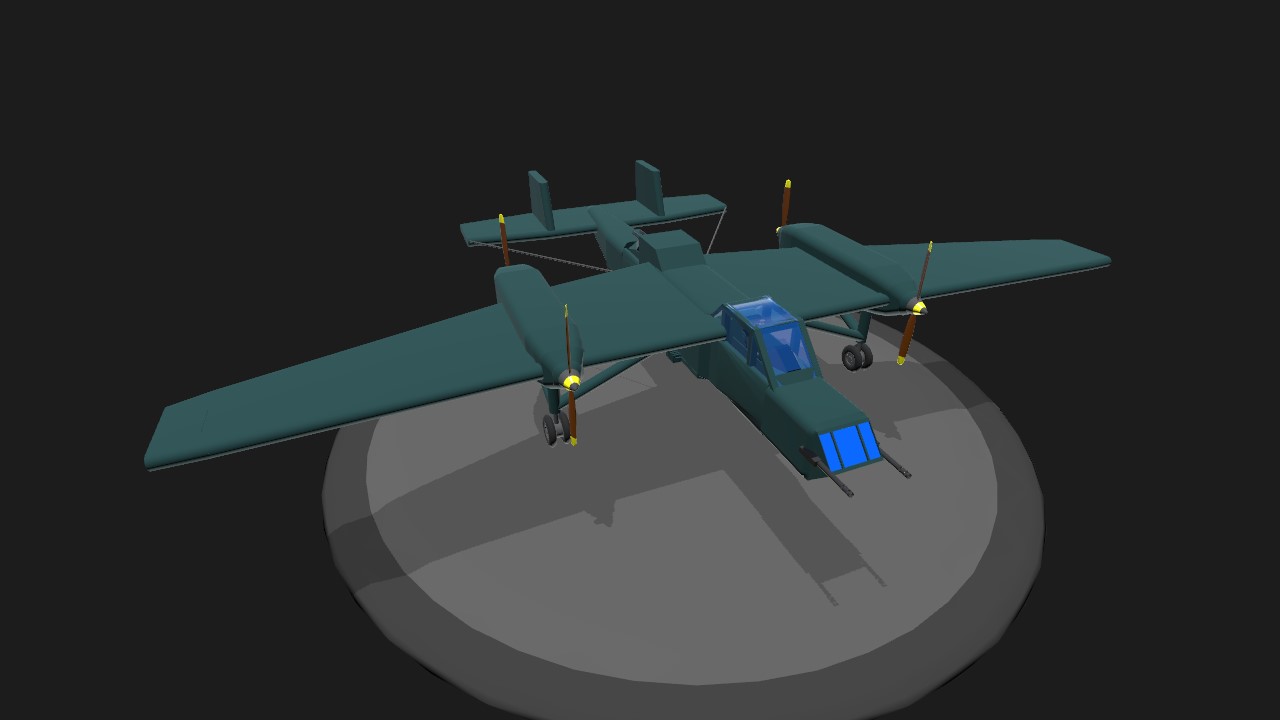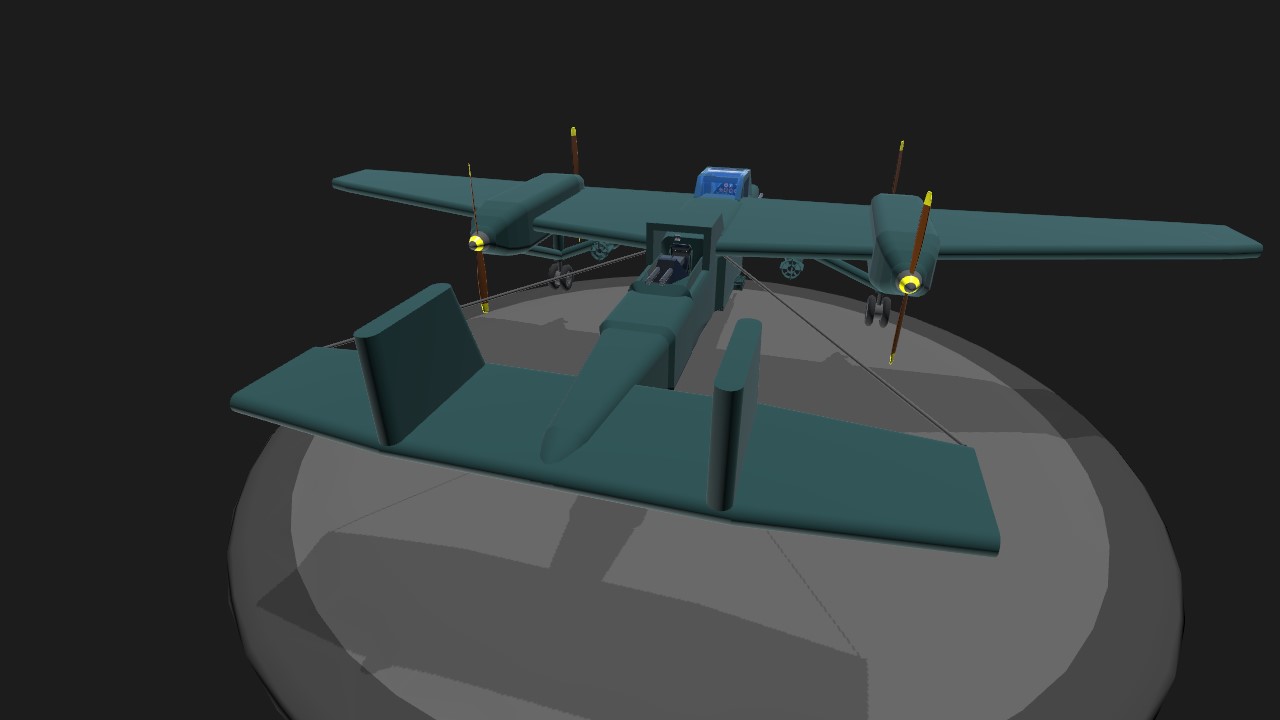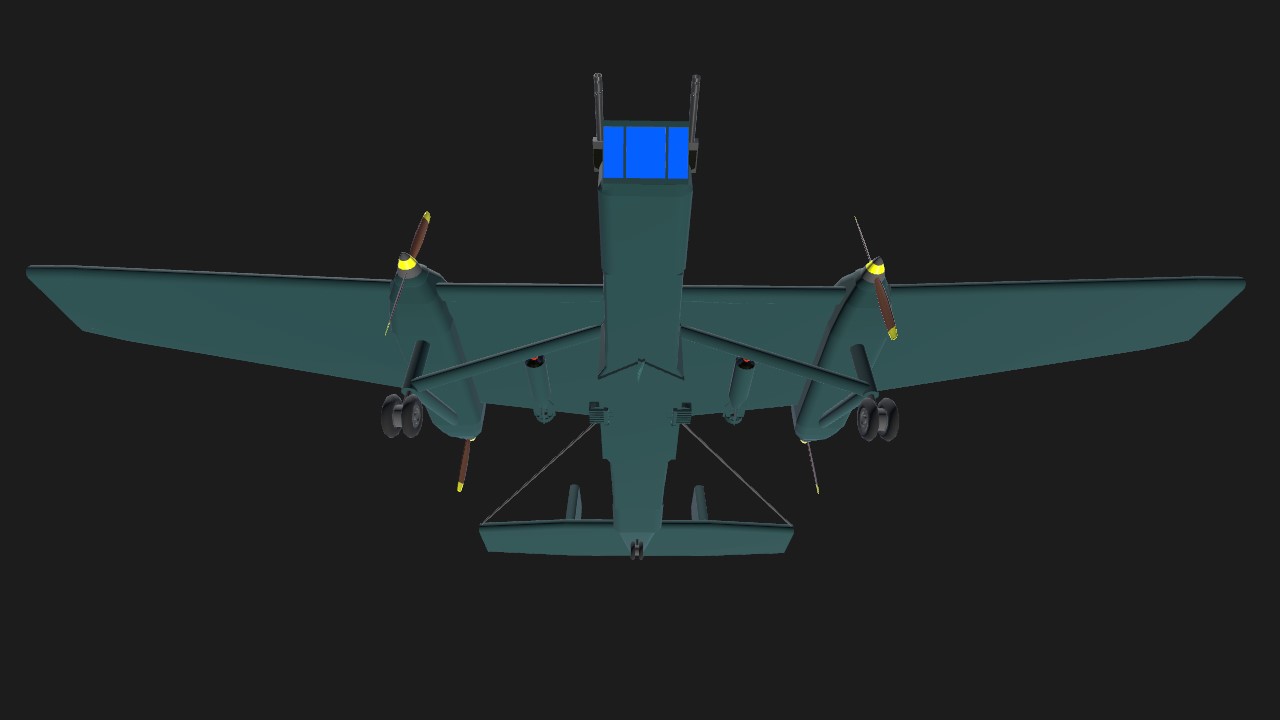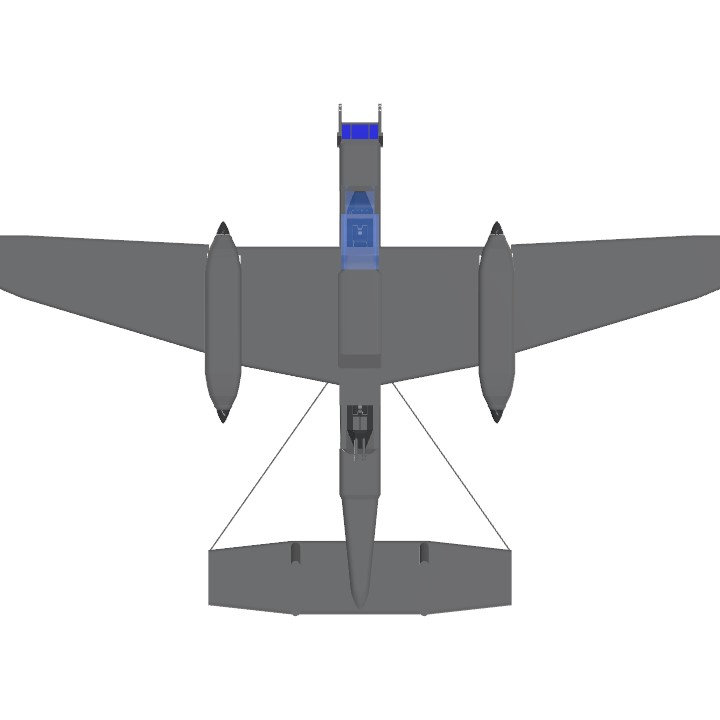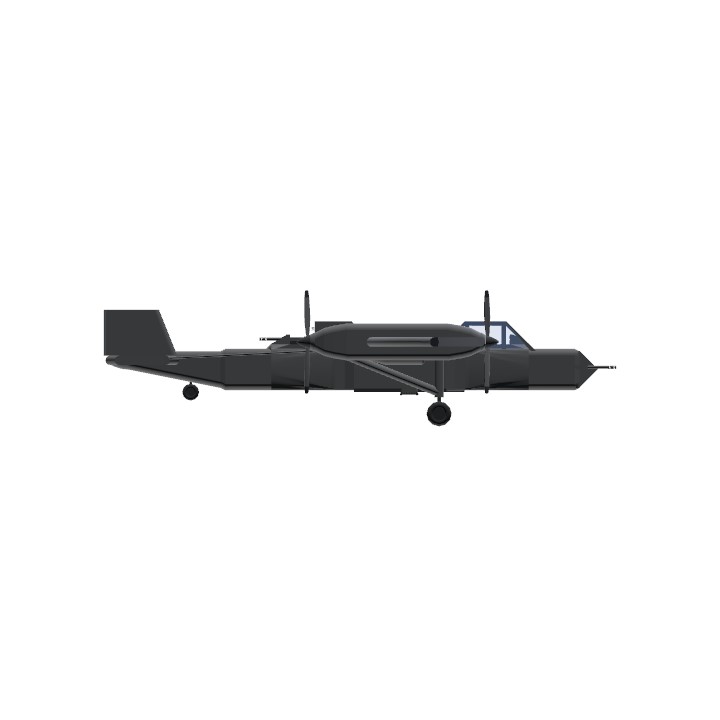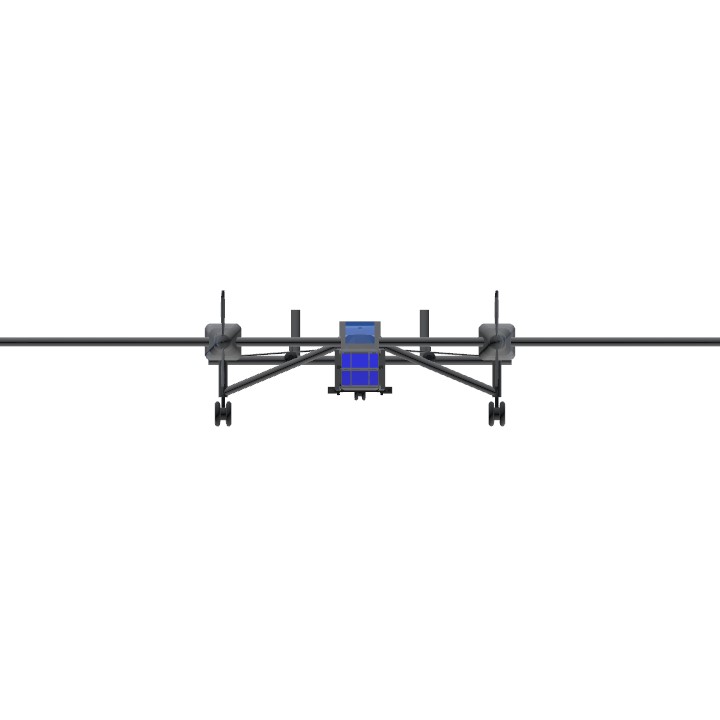Instructions:
AG1 + left slider down: Open bomb bay doors
Lore:
The GP-234 Argive is an early interwar plane from my fictional mid-Atlantic island nation of Sundria. Naval trade is a significant part of their economy, and they had developed some reliance on imports to support their population. Because of this, during World War 1, they were concerned to see the effectiveness of German submarine attacks on merchant (and military) shipping. To help protect ships within their waters, they asked for manufacturers to submit designs for a maritime patrol plane, with the Argive from GP Fabrications being the one selected to put into production.
For the time, the Argive was considered quite an advanced design. Doing away with the open-cockpit biplanes of WW1, this is a monoplane design with an enclosed cockpit for the pilot and observer / bomb aimer. The rear defensive gunner is given a partial cover as it was decided that freedom to move and aim their guns was more important than the comfort an enclosed compartment would have provided. As well as the twin moveable machine guns to defend the rear, two fixed machine guns are mounted to the side of the nose for forward defence and possible strafing. Other armament includes a torpedo, carried (in another advanced feature for the day) in an internal bomb bay. Two 250lb bombs can also be carried on underwing racks, and it is possible to swap out the torpedo to carry two additional 250lb bombs in the internal bay.
All of this did lead to quite a heavy and bulky plane, which posed something of a problem as reliable, high-powered engines were not really available at the time. To overcome this, the 500HP Bumpfoil engines was selected as being reliable enough while still providing enough power. However, it was necessary to use four of them, in two pairs of tractor-pusher configuration, one pair on each wing, with each engine driving a two-blade, fixed-pitch wooden propeller. A large fuel tank is also included in the centre section of each engine nacelle, giving the Argive a good level of endurance. This power also propels the Argive to a speed of over 160mph in level flight, fast enough to make it difficult to catch by contemporary floatplane or carrier-based fighters.
In service, the Argive was generally well-liked by its crew. With the wide stance of the landing gear, it was stable and unproblematic on the ground, and was easy to take off and land. In flight, it was also stable and consistent in its handling - not the flashiest or most agile of planes, but one that was generally lacking in problems and could be relied on to bring them back from a long flight over the open ocean. There were some complaints about it being a little nose-heavy, but this also meant it was easy to recover from a stall as it would tend to pitch down, pick up speed and be able to be brought back to level flight. During bombing runs, the glazed nose was praised for providing excellent visibility. The pilots also enjoyed the visibility from their cockpit - with the bomb-aimer's position being below them, and the engines on the wings, there was little to obstruct their view. The rear gunner also had a good view, though there were grumbles about lack of comfort in poor weather as they lacked the enclosed compartments of the other crew.
As the Argive was an early interwar design, it did not see much combat action, mainly being used for peacetime patrols and developing crew training and procedures. By the start of World War 2, it was obsolete and rapidly being phased out in favour of more modern planes, though some were still in service as anti-submarine patrol was not considered a high risk activity. One did manage to score a "possible" submarine kill in this time, but that was the only front-line effect.
As well as armed patrol, some other variants of the Argive were developed for alternate uses, mostly by removing the bomb bay and making alternate use of the space. The Argive Voyager had its weapons removed, a large auxiliary fuel tank installed in the bomb bay, and was used for publicity purposes, achieving some distance and endurance records. The Argive Tutor replaced the bomb bay with a second, tandem cockpit, and was used as a trainer. The Argive Lookout changed the bomb load and doors for a photo-reconnaissance setup, and the Argive Transport simply sealed the bomb doors and used the space for light cargo, passenger seating, or (in a few planes) as space for a stretcher for use as an ambulance plane.
Specifications
General Characteristics
- Predecessor FICTIONAL WARPLANE/COUNTRY CHALLENGE (CLOSE)
- Created On Windows
- Wingspan 64.2ft (19.6m)
- Length 45.7ft (13.9m)
- Height 12.4ft (3.8m)
- Empty Weight 10,969lbs (4,975kg)
- Loaded Weight 13,107lbs (5,945kg)
Performance
- Horse Power/Weight Ratio 0.152
- Wing Loading 21.0lbs/ft2 (102.7kg/m2)
- Wing Area 623.3ft2 (57.9m2)
- Drag Points 7747
Parts
- Number of Parts 218
- Control Surfaces 6
- Performance Cost 874

